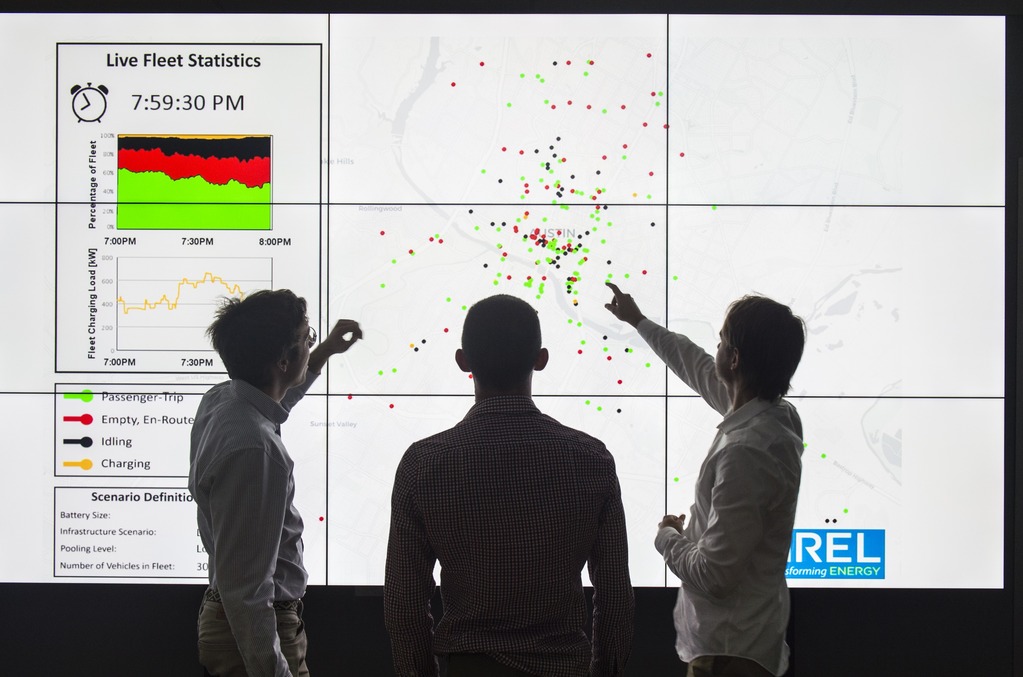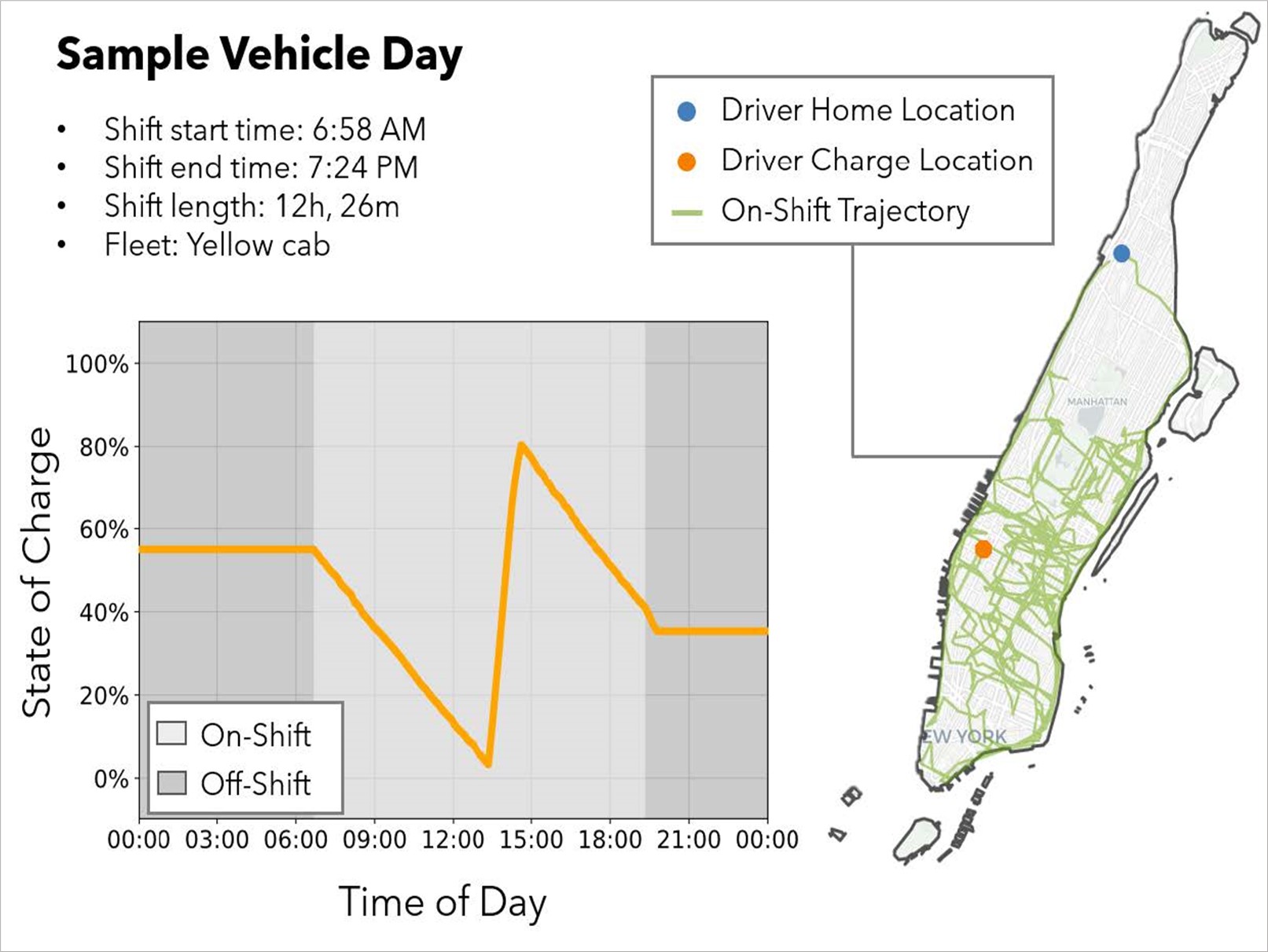Transportation Modeling Tool Informs Intelligent Planning and Control for Mobility-Service-Provider Fleets
The transportation industry is on the cusp of rapid evolution, with vehicle electrification, automation, and ride sharing transforming the age-old paradigm of privately owned and operated gasoline vehicles.
“When evaluated separately, these emerging trends offer great opportunities as well as potential obstacles,” said Matthew Moniot, an advanced vehicle simulation and data analysis engineer at the National Renewable Energy Laboratory (NREL). “Here at the laboratory, we are working to steer these trends toward sustainability, with a focus on energy efficiency, affordability, equity, and environmental benefits.”
The complexities of vehicle electrification, automation, and ride sharing motivated researchers to develop the Highly Integrated Vehicle Ecosystem (HIVE), a transportation modeling tool that simulates the operations of mobility-service-provider fleets, including those that employ shared autonomous electric vehicles (SAEV). HIVE mixes agent-based modeling and centralized dispatch for automated and human-driven fleets and ride-hail passengers.

“HIVE supports rapid, end-to-end research into intelligent fleet planning and control to inform fleet, battery, and infrastructure investment decisions, as well as efficient charge management and vehicle dispatching strategies,” Moniot said. “Such strategies can curb potential side effects associated with minimal ride pooling, an insufficient charging infrastructure, and zero-passenger miles.”
HIVE’s flexible design enables researchers to build large-scale simulations and compare outcomes across scenarios that vary with respect to locations and operating areas, vehicle types and fleet makeup, charging and fueling station networks, fleet operational behaviors and dispatching algorithms, economic factors and relevant policy considerations, and customer behavior, such as the willingness to pool or delay travel.
Case Study Highlights HIVE’s Capabilities
Researchers tapped demand data from the New York City Taxi and Limousine Commission to demonstrate HIVE’s unique capabilities and flexibility in modeling ride-hailing fleets. This study, detailed in the NREL report “HIVE: A Platform for Managing the Operations of On-Demand Vehicle Fleets,” captures the trade-offs between input variables of interest—in this case, fleet size, load profiles, and quality of service.

HIVE’s flexible reporting offers results at the vehicle and fleet levels. Figure 1 provides an overview of sample information available for each vehicle during the simulation. The vehicle trajectory incorporates a variety of driving states, including commuting, repositioning, dispatching to trips, performing trips, and dispatching to charge. During each driving event, road link speeds determine vehicle travel times. Although links in Manhattan are generally low speed, the vehicle accumulates significant mileage throughout the day—over 150 miles—requiring a fast charge at a station in midtown Manhattan before continuing to service trips throughout the remainder of its shift.
Findings emphasize increased charging demand and the importance of fleet sizing necessary to support Manhattan taxi services. Shift start times and request dynamics heavily influence charging times and locations throughout the city. As a result, charging loads across stations are highly variable throughout the day, with no charging during overnight hours. Ride-hailing fleets must employ enough vehicles to manage customer demand alongside charging needs to accommodate passengers.
“HIVE’s functionality extends well beyond the considerations of this case study,” Moniot said. “Additional opportunities for inquiry are vast, including exploring the trade-offs between vehicle battery investment and charging infrastructure investment, autonomous fleet operation versus human-driven fleets, and more.”
Learn more about NREL’s sustainable transportation and mobility research.
Last Updated May 28, 2025
